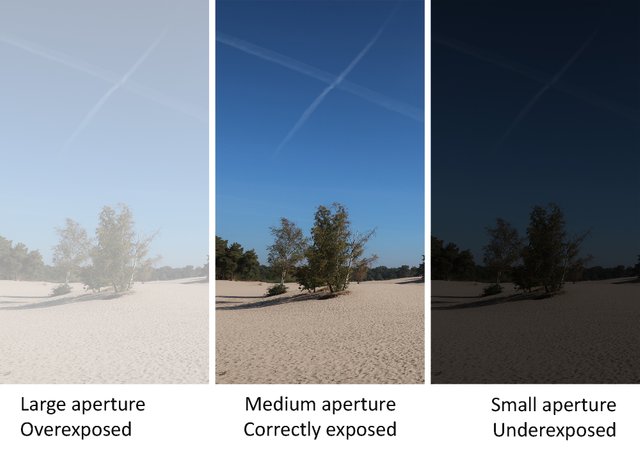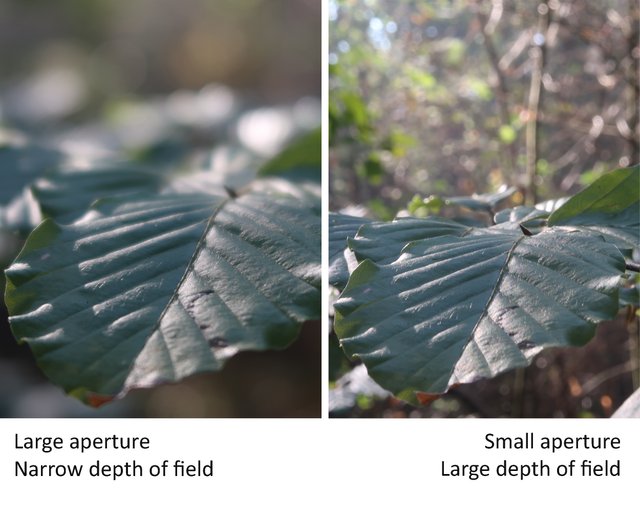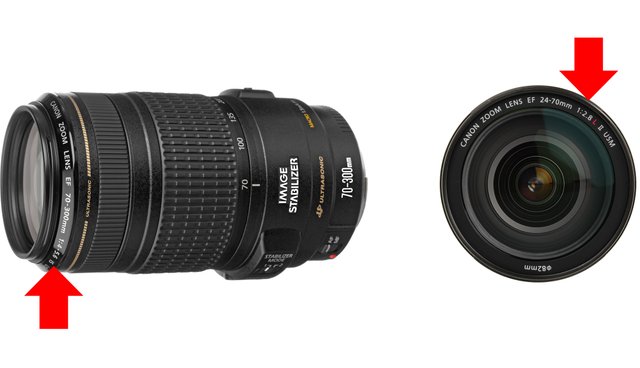Everything a photographer should now about aperture - A Tutorial to improve the quality of your photos
The aperture is, with the shutter speed and ISO, one of the pillars of photography. In this tutorial, I will explain all you need to know about the aperture.
What is aperture?
The aperture behaves similar to a human eye: if it is dark, the pupil in our eyes widens to allow more light to shine through the pupil; and if it is bright, the pupil narrows allowing less light to shine through the pupil. In photography, the pupil of a lens is the diaphragm: the diaphragm controls the amount of light that travels through the lens. The resulting opening is what we call the aperture. Aperture therefore basically means a hole or an opening through which light travels through the lens.
Large versus small aperture
The aperture is expressed as an f-number. That is why you will always see an ‘f’ before the aperture. For example: f/2.8. However, this is where it gets confusing: a large aperture is a low f-number and a small aperture is a high f-number. It may help to know that the aperture is expressed as a fraction: 1/4 is smaller than 1/2 and 1/8 is smaller than 1/4. That is why a higher f-number results in a smaller opening through which light travels. Small f-number therefore result in large apertures and large numbers result in small apertures. This is illustrated in the following image.

Aperture versus exposure time
When you change the size of the opening through which light travels through the lens, you basically change the amount of light that will travel through your lens. A large aperture allows more light to travel through your lens, making your photos look brighter. And a small aperture allows less light to travel through lens, making your photos look darker.

In low-light situations, you will probably want to use a large aperture to capture as much light as possible. However, in very bright day-light, you will probably want to use a small aperture.
Aperture versus depth of field
Depth of field is the area of an image that will appear in focus. Depth of field therefore refers to the distance between the in-focus area of your image and the out of focus area of your image, or in other words: the amount of background blur. Images that have a large depth of field, have a sharp foreground and sharp background. Images with a shallow depth of field, have background that is out of focus.
Changing your aperture also changes the depth of field. When you use a large aperture, the depth of field will be shallow (background will be out of focus). When you use a small aperture, you will get a large depth of field (background will be in focus).

Portrait photographers usually like to use shallow depth of field: the model is in focus, but the background is out of focus. On the other hand, landscape photographers usually use a large depth of field: everything on the image is in focus.
I will post a separate tutorial about depth of field soon.
Lens versus camera
If you are using a digital single-lens reflex camera (DSLR), the aperture is determined by your lens: every lens has a limit on how large and how small the aperture can be set. For example, the Canon 50mm has an aperture of f/1.8. This means that the largest possible aperture is f/1.8, allowing a lot of light to travel through the lens.
There are also lenses where the maximum aperture changes when zoom in and out. For example, the Canon 70-300mm lens has an aperture of 4-5.6. This means that the largest possible aperture at 70mm is f/4 and the largest possible aperture at 300mm is f/5.6.
More expensive lenses allow to use an equal amount of light to travel through the lens for the entire zoom range. For example, the Canon 24-70mm has a maximum aperture of f/2.8 on the entire zoom range. Meaning the largest possible aperture at 24mm is f/2.8 and the largest possible aperture at 70mm is also f/2.8.
The largest possible aperture is usually mentioned on the lens. Sometimes the ‘f’ is not mentioned and the forward-slash is replaced for a colon, such as 1:2.8, but it all means the same. Lenses never mention the smallest possible aperture they can set. That is because most lenses can easily set an aperture of f/22, which is small enough for everyday photography.

Setting your aperture
A lot of people use the automatic function on their camera to shoot photos. The camera will then calculate the best aperture, shutter speed and ISO settings. However, you can also manually set the aperture (also on most phones!). You should therefore select manual or aperture-priority mode on your camera. Manual mode is often written as ‘M’ and aperture-priority is written as ‘A’ or ‘Av’.
Now you know everything about aperture, it is time for you to start shooting with different aperture settings: e.g. high and low f-numbers. Do you see a difference?
Would you like me to write more photography tutorials? Let me know in the comments (you may even suggest topics).
Don’t forget to Upvote, ReSteem, Comment or to Follow Me if you liked this post!